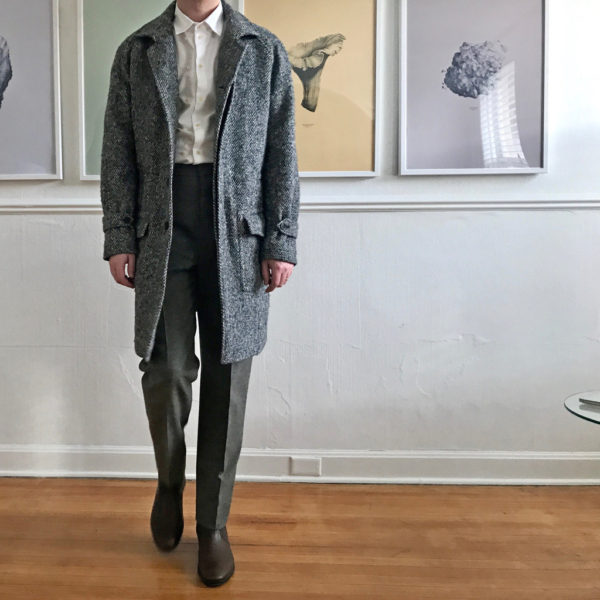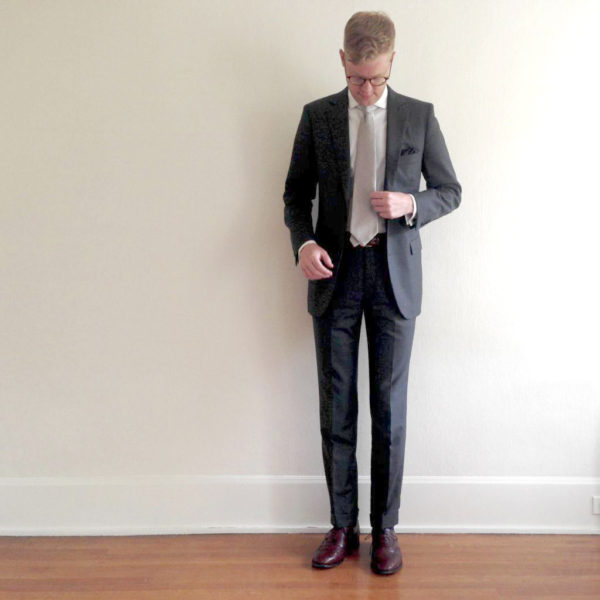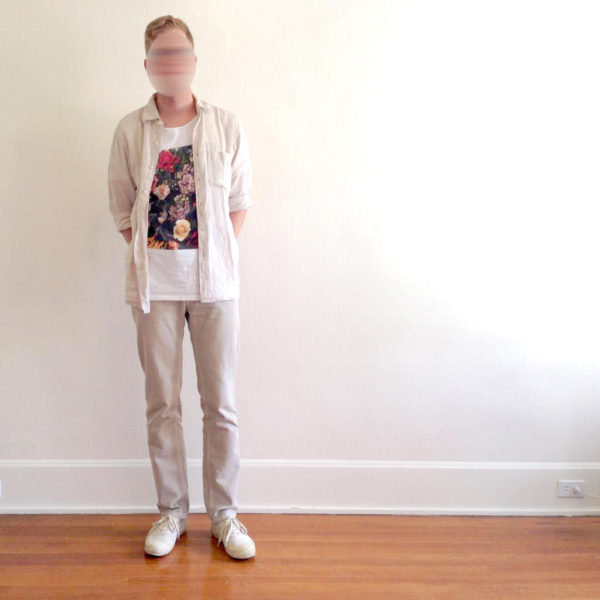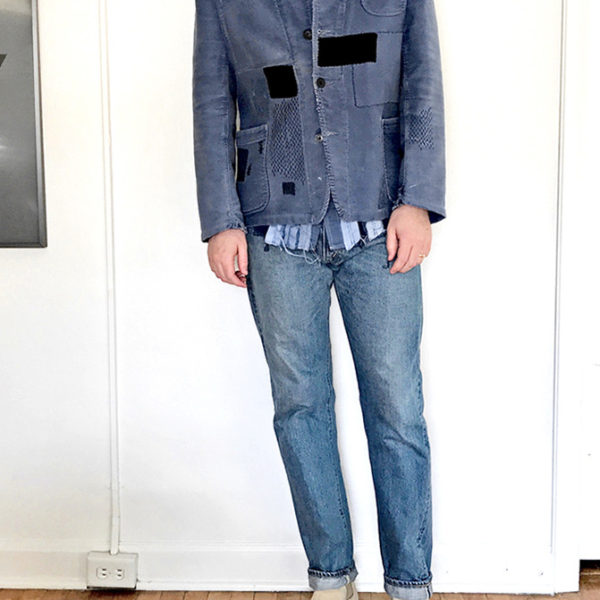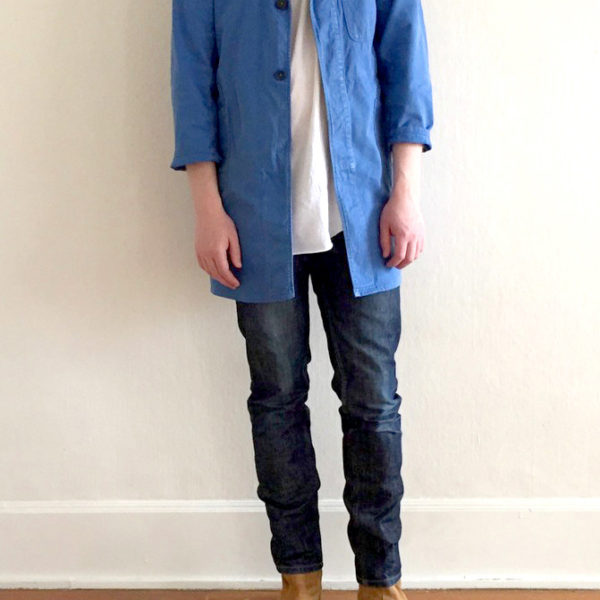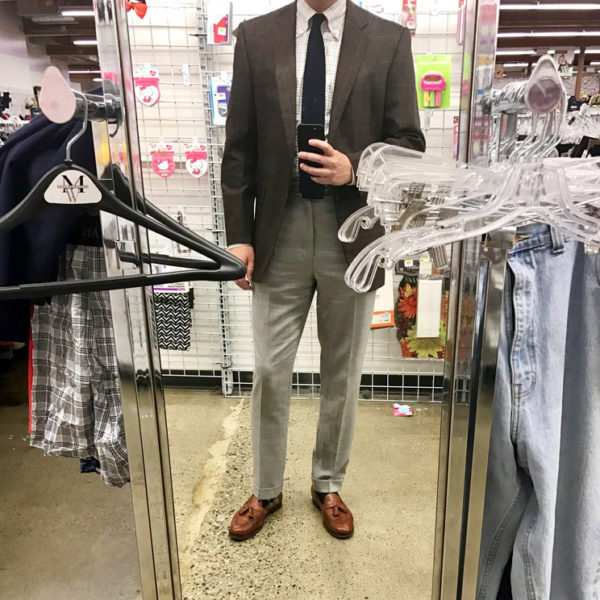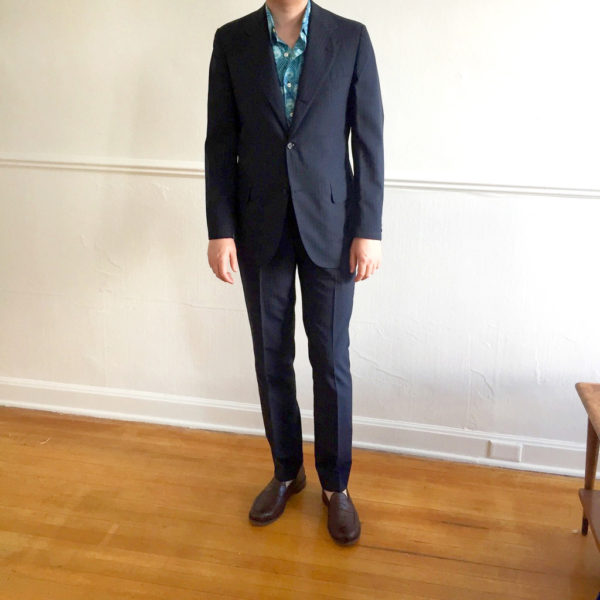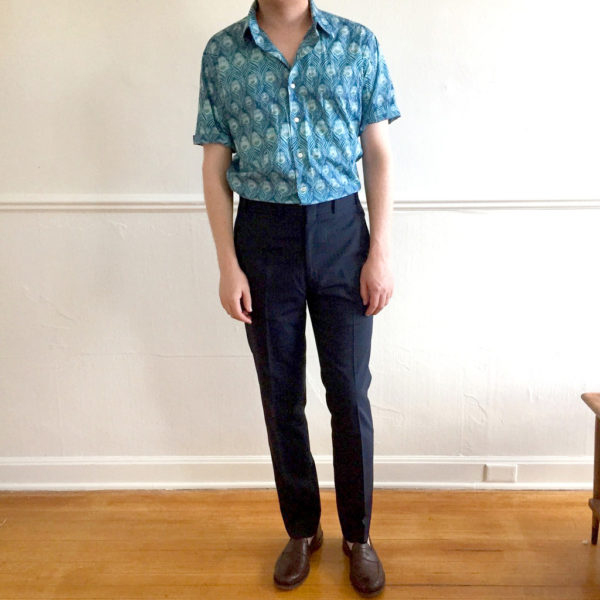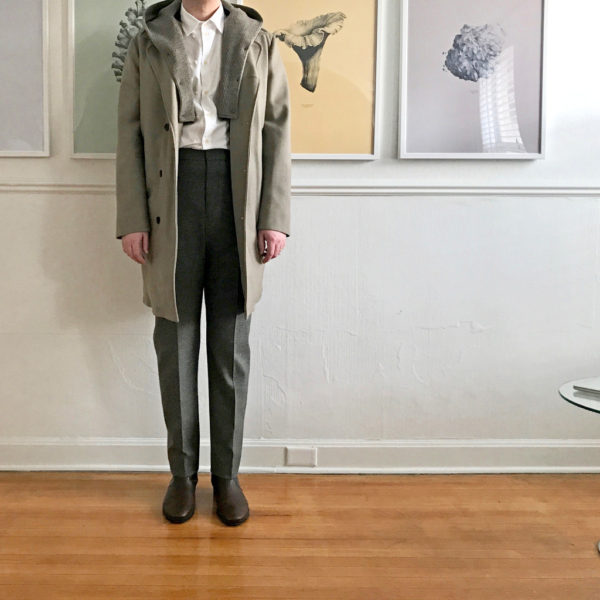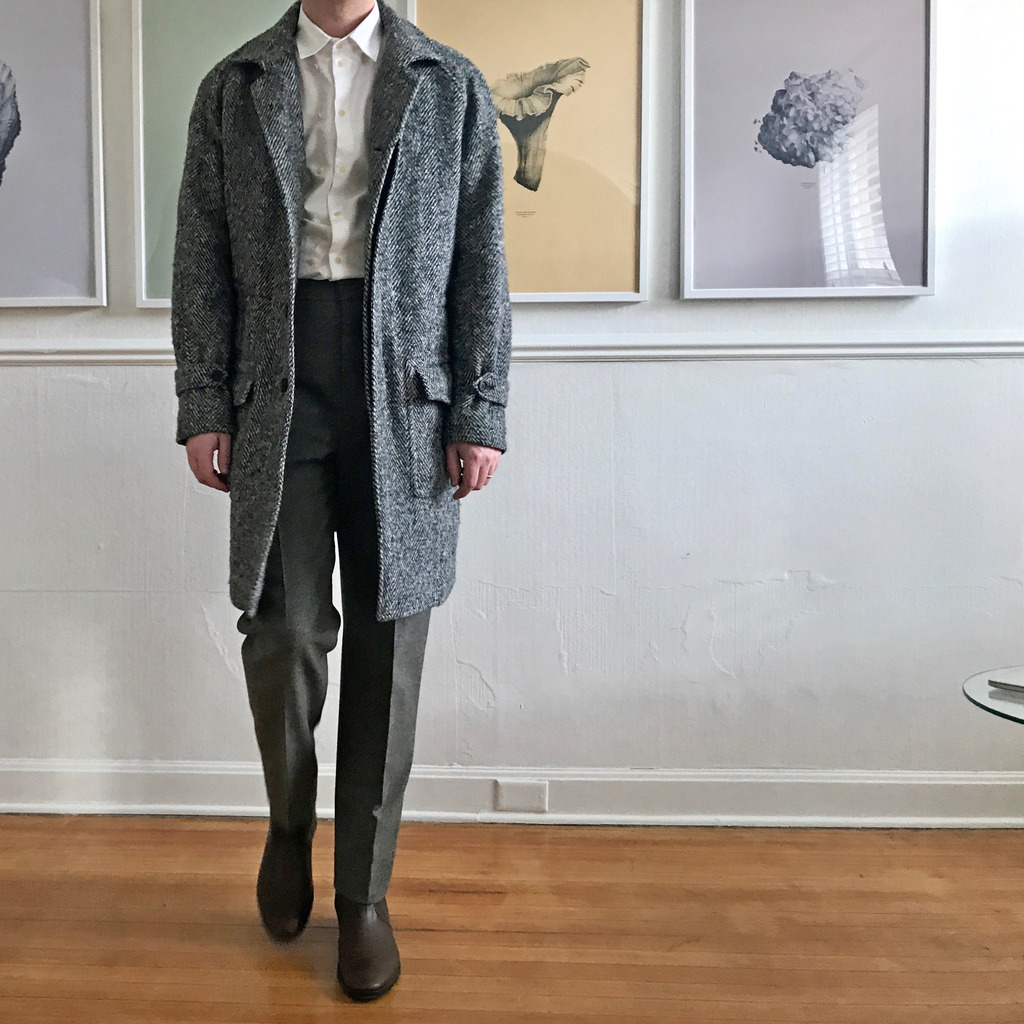
- Eidos “Chiaia” coat, Helmut Lang shirt, Lemaire pants, Lemaire boots
- Brooks Brothers suit, RLPL shirt, Turnbull and Asser tie, Sanders shoes
- Uniqlo shirt, Cool Try tee, Margiela jeans, Nigel Cabourn x Converse shoes
- 1950s patched work jacket, Needles Rebuild shirt, Orslow jeans, Epaulet Chelseas
- Margiela replica Norwegian sweater, Uniqlo jeans, Margiela painted GATs
- 1960s German shop coat, Void the Brand tee, Margiela jeans, Margiela western boots
- Oxxford sport coat with an Oxxford shirt
- 1960s Brooks Brothers sack suit, vintage Liberty of London peacock print shirt
- 1960s Brooks Brothers sack suit, vintage Liberty of London peacock print shirt
- Stephen Schneider coat, Helmut Lang shirt, Lemaire pants, Lemaire boots
When you think of thrifted outfits, you probably think of very specific looks. Maybe it’s the sort of things you’d expect to see at Inspiration LA – guys in workwear coats, souvenir jackets, old jeans, and Aloha shirts. Or it could be a more polished, mid-century Ivy Style, with a polo coat thrown over a 1960s Brooks Brothers suit. Even if the styles can be eclectic, there’s a familial relation between them.
Things don’t have to be that way, however. Contemporary designers draw heavily from the past, and thrift stores are treasure troves for the original pieces. No matter your sense of style, there’s likely room in your wardrobe for a few thrift finds.
Take Sean in Salt Lake City, for example. He has broad taste and his wardrobe jumps between all sorts of aesthetics. From Ivy trad to Americana-influenced Japanese labels to contemporary fashion – he has a bit of everything.
Part of this is because he’s an inveterate thrifter who’s let serendipity influence his wardrobe. “I could say I’m only going to wear clothes inspired by vintage outdoor gear from here on out, but then I’ll come across something selling for pennies on the dollar,” he says. “It could be a hidden placket shirt, vintage Polo RL bear tee, or Kiton jacket. In those cases, I’m not going to just leave the item there. You start to ask, ‘what can I do with this?’”
All of Sean’s outfits feel contemporary, even when they draw on vintage-inspired workwear, but they each incorporate one or two thrift finds. In the above, you can see a Ralph Lauren Purple Label shirt he found second-hand, along with a Turnbull & Asser tie, mid-century Brooks Brothers suit, and pair of Sanders wingtips (all bought at Salt Lake City thrift shops). The more casual pieces include shirts from Helmut Lang and Jil Sander, as well as a peacock print Liberty of London button-up (again, every one thrifted).
The other things in his wardrobe were bought new, but they show how easily thrift-store finds can be mixed with almost any aesthetic. Sean wears his white Helmut Lang shirt with everything from an Eidos tweed topcoat to a Stephen Schneider hooded overcoat (the first being an Italian menswear designer, the second slightly more avant garde). There are also a couple of vintage, indigo-dyed workwear coats above worn in ways that aren’t just about reproducing looks from the past. Lastly, he’s used a thrifted, brown Oxxford sport coat to make a button-down and knitted tie combo look complete.
A lot of this is possible because of how much designers draw from a variety of historical influences. Sean notes:
I think I’m drawn to Engineered Garments and Margiela specifically because they mesh well with this bricolage approach to fashion. I mean, the Replica stuff from Margiela is all over the place anyway—cowboy boots, Norwegian fisherman sweaters, German army sneakers, Argentine boots, cowichans, etc. It may as well have come from a thrift shop (and some of it probably did). Similarly, Engineered Garments (and much of that Japanese Americana genre) is inspired by a lot of the vintage militaria and outdoor clothes that I see in thrift shops. So I can easily wear it with the late-1970s kelly green Sierra Designs 60/40 parka I found, or the WWII era field jacket, or the 1940s hunting shirts.
Whatever is your preferred style, there’s almost certainly something in a thrift shop that would fit in well with your wardrobe. Second-hand goods often add character, and show a unique style that isn’t just about spending money at fancy boutiques. Jesse wrote a great three-part guide on how to thrift for menswear, which you can read here. Sean also has three additional tips:
- Broaden Your Interests: “If you’re only looking for suits and sport coats, maybe you’ll find something every 30 stops. But if you’re also looking for pottery, kitchenware, furniture, and lithographs, then you’ll have a better time.”
- Think About Style, Not Prices: “Rather than just doggedly hunt for certain brands that have high retail value, learn to develop an aesthetic vocabulary and recognize cool stuff. I think a lot of people, when they get into thrifting, try to learn ‘the good brands.’ And if they find something from one of the ‘good brands,’ they consider it a victory. While it is cool to see a Loro Piana or Cucinelli tag on a Goodwill rack, the most satisfying finds are often the no-name pieces that are unique and interesting – an ‘80s all-over print button-down that looks like it could be from Dries Van Noten (but isn’t). A hand-knit sweater from Iceland that wouldn’t sell for squat on eBay but is one-of-a-kind. A ‘70s LL Bean seersucker shirt that looks great under an Engineered Garments Bedford jacket.”
- Reconsider Your Divides: “When you build a wardrobe like this, it helps to learn how to mix-and-match. For example, I found this hidden-placket dress shirt by Brioni. You wouldn’t normally pair Brioni and Lemaire, but with that design, it works. I can wear that shirt with a coat and tie or I can wear it with a Lemaire blouson and side-zip boots. I never used to wear my ‘dress pants’ outside of work, but then I realized, why not? My gray flannel Howard Yount trousers are just as at home with a Stephan Schneider coat and band collar shirt. And the blue Engineered Garments pea coat doesn’t have to be paired with other heritage-y stuff like fatigues; it’s actually more interesting with a white shirt and black tailored trousers and bluchers. Reconsider the artificial divides we put between different fashion genres.”
For more of Sean, you can follow him on Instagram. You can also learn more about the clothes shown above by clicking the photos.
